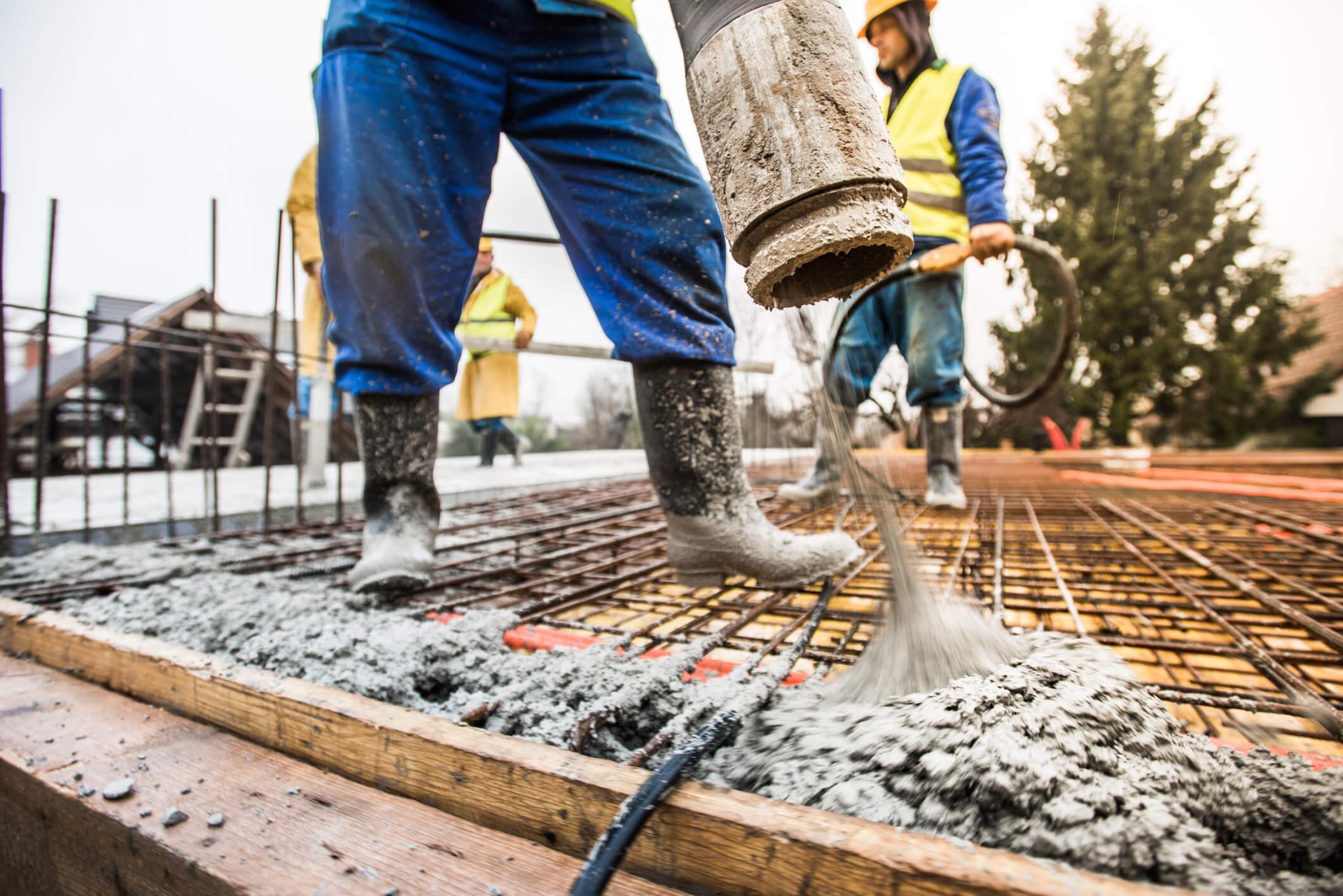Posted on April 02, 2020
What Is Cement?

Cement is a binding agent that can be used to stick various building materials together. The most common types thought of in the construction industry are Portland cement and Asphalt cement. Portland cement of the most important ingredients in concrete. It may be in either a dry powdery form before water is added or the paste (mortar) that hardens and binds to whatever it’s touching.
Portland cement is made of a few primary substances, including limestone, sand or clay, bauxite, and iron ore. It may also include shells, chalk, marl, shale, slag, and slate. These different components are mixed and heated in cement processing plants to form a rock-hard substance called clinker. The clinker is then ground down to the powder that can be mixed with water to form a paste.
What Is Concrete?
Concrete is a durable building material that uses cement as one of its components. There are four primary ingredients in concrete: cement, stone, sand, and water. The less water that is added to a concrete mixture, the stronger that mixture will be.
The water used in concrete activates the cement, which acts as the binding agent. Aggregates (coarse and fine) in the mix are bound together by the cement. Mixes that use larger aggregates tend to be stronger than those with finer aggregates.
Qualities of Good Concrete
Good concrete should have a few specific qualities that set it apart. First of all, the mix needs to be workable enough that it can be placed and consolidated properly. Yes, less water makes stronger concrete, but if your concrete is too dry, you won’t be able to get it in place.
Concrete may also need to meet certain specifications once it’s hardened. Good concrete should be resistant to freezing, thawing, and deicing chemicals; watertight; resistant to wear; and strong. With all of these requirements in mind, attention should be focused on the concrete's mix design.
Concrete Mix Design
The process of figuring out how to create this optimized concrete is called mix design. There are five primary components that concrete workers will need to consider when building a mix design: workability, strength, durability, density, and appearance.
Workability is that quality that allows the concrete that we mentioned to be placed with minimal effort and may also include considerations for whether the concrete will be pumped into place. Strength is a particularly important consideration for structural concrete, and durability determines how long the concrete will last. Density can contribute to strength and durability, and appearance is an important in decorative concrete applications.
Building with Concrete
Because of its durability and strength, concrete is a very popular building material. It comprises everything from the drainage culverts that run beneath our streets to the walls of modern homes. It forms the core of many of our skyscrapers and makes up the sidewalks we walk down every day.
Because of its versaility, construction workers can simply pour concrete into whatever shapes they need and then install those without having to shape, bend, cut, or weld the pieces. Architects appreciate concrete for its energy efficiency and the sense of safety it brings to a space.
Insulated Concrete Forms vs. Wood Frames
In the past, homes have been framed using wood, but in the last few years, architects started taking a harder look at concrete. Wood is vulnerable to termites, moisture damage, rot, fire, and many other sorts of damage and destruction. To combat those issues architects have begun turning to insulated concrete forms for their building envelopes.
Insulated concrete forms start with large blocks made of a Styrofoam-like material. These blocks have channels cut down through the middle of them similar to cinderblocks and are easy to stack together. Builders frame up a wall using these blocks, drive rebar down through the channels, and then pour them full of concrete.
Houses built using these insulated concrete forms are incredibly well insulated and durable. They provide a high degree of soundproofing, and they’re virtually waterproof. These have become especially popular in coastal areas where the threat of hurricanes requires builders to find creative ways to build durable homes.
Learn More About Cement and Concrete
Although the terms concrete and cement are often used interchangeably in our culture, they are not the same. Cement is one small component of concrete, whereas concrete is a building material that has become integral to our culture. Knowing the difference between cement and concrete can help you better understand one of the primary building materials in use around you every day.
If you’d like to use concrete in your next building project, check out the rest of our site at Specify Concrete. We can build concrete pavements and structures to meet your needs. Contact us today to find a producer near you and get started with the world’s most-used building material.
